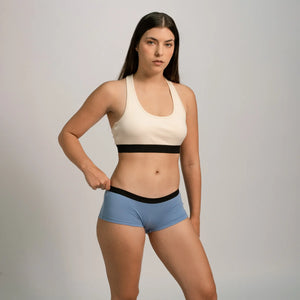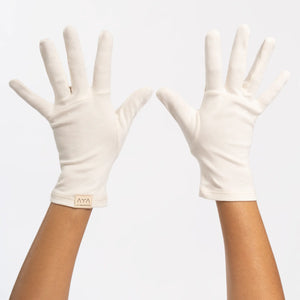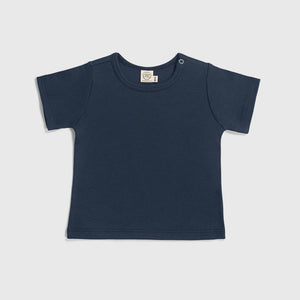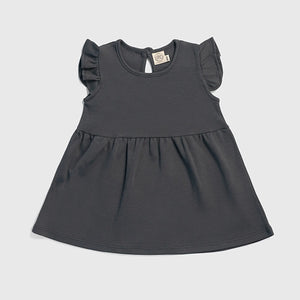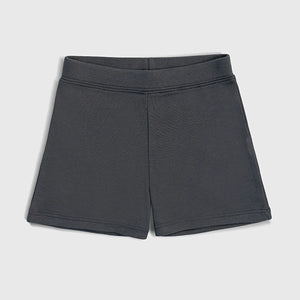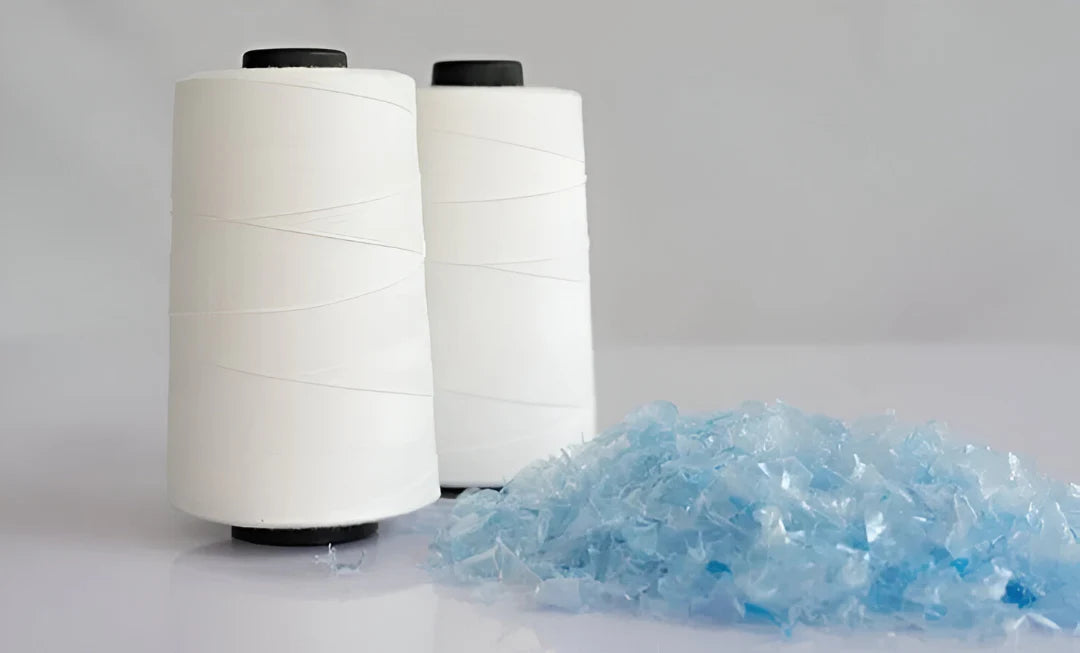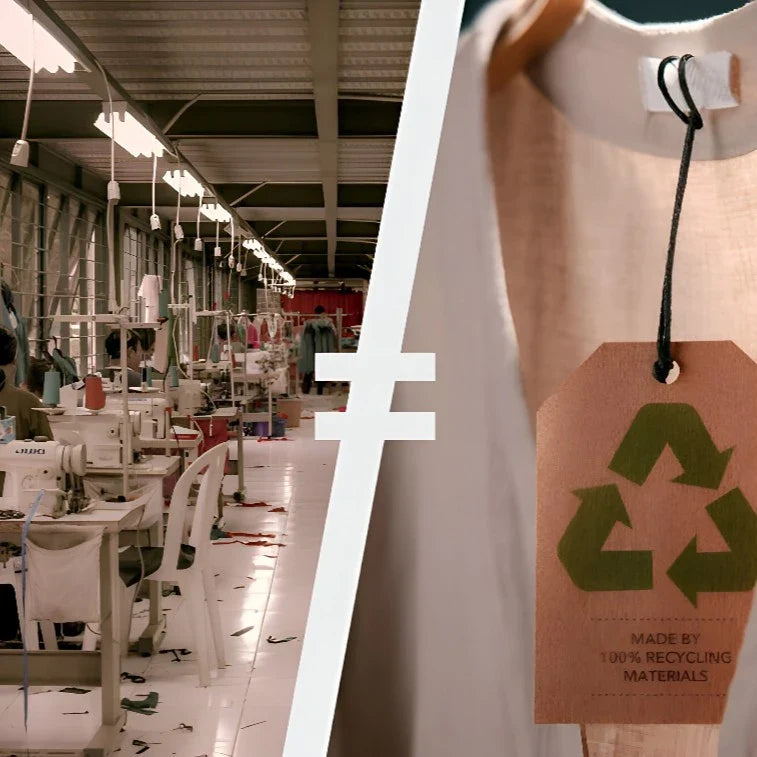Fast Fashion and Biodiversity Loss:
A Growing Threat to Wildlife and Ecosystems
.
AYA | MAY 22, 2025
READING TIME: 7 minutes
By Jordy Munarriz & Lesia Tello
AYA | MAY 22, 2025
READING TIME: 7 minutes
By Jordy Munarriz & Lesia Tello
Every May 22, as we celebrate the International Day for Biological Diversity, it is essential to reflect on the profound and often overlooked effects of fast fashion on the natural world. Fast fashion, known for its cheap, mass-produced clothing, is a major driver of environmental degradation, particularly in terms of biodiversity loss. Through habitat destruction, pollution, and unsustainable resource exploitation, the fashion industry is accelerating the extinction of many species. This article explores how fast fashion contributes to the loss of biodiversity, backed by scientific studies, news reports, and current legislation.
The Major Ways Fast Fashion Endangers Vulnerable Species
Deforestation due to textile material extraction
One of the most devastating consequences of fast fashion is the destruction of forests to source materials like viscose, a fiber commonly found in affordable clothing. The production of viscose alone leads to the deforestation of 200 million trees every year, particularly in forests critical to endangered species [1]. In Indonesia, Canada, and the Amazon, this deforestation displaces species such as orangutans, jaguars, and endemic birds [2,3].
For example, in the Amazon, large areas of forest are cleared for eucalyptus plantations, which are used to make viscose. This results in the displacement of species like the giant anteater and jaguar, both of which rely on the Amazon’s rich ecosystems [2,4].

Deforestation of forests in the USA due to eucalyptus planting. Picture by: Marizilda Cruppe/Greenpeace
Cotton Farming and Pesticide Use
The cultivation of conventional cotton, a primary material for fast fashion, uses large amounts of pesticides and fertilizers that contaminate the soil and water, affecting local ecosystems [5]. Pollinators like bees and butterflies, which are vital for food production, suffer dramatically in cotton-growing areas. In regions such as India and the United States, pesticide use has led to a 40% decrease in pollinator populations [6,7].

Fields covered in pesticides in Indonesia. Picture by: B. Udaykiran
Microplastics in Oceans
The fashion industry contributes significantly to ocean pollution. A staggering 35% of marine microplastics come from synthetic fibers such as polyester and nylon, which are commonly used in fast fashion [8,9]. These tiny fibers enter the food chain, affecting marine life, particularly turtles, whales, and seabirds. The ingestion of microplastics has been linked to digestive issues and even death in marine species [8].
In the Atacama Desert (Chile), the vast amounts of discarded fast fashion clothing release toxins that contaminate the soil and underground water [10], threatening endemic species like the guanaco.

Pacific water sample with visible microplastic residue. Picture by: Marg Johnson.
Toxic Chemical Discharges
The textile dyeing process is another major source of environmental damage. Toxic chemicals such as lead and cadmium are used in dyes, and when discharged into rivers in countries like India, Bangladesh, and China, they poison fish and amphibians [11,12]. For instance, the Citarum River in Indonesia has lost 60% of its fish species due to the toxic runoff from textile factories [13,14], while in Bangladesh, amphibians near textile factories show genetic mutations caused by chemical exposure [15].

Wastewater from the textile industry dyed red in Colombia. Picture by: Unimedios.
Unsustainable Exploitation of Animal Resources: Leather, Wool & Water
The demand for cheap leather and wool for fast fashion contributes to deforestation and habitat destruction. In Brazil and Argentina, large-scale cattle ranching for leather leads to the destruction of forests such as the Amazon and Gran Chaco, home to endangered species like the jaguar and giant armadillo [16,17]. The expansion of grazing lands is a significant driver of biodiversity loss in these regions.
In Australia, the overgrazing caused by merino sheep farming for wool is damaging the land and threatening species such as the koala and kangaroo [18,19]. Overgrazing depletes the soil, reduces plant diversity, and forces these species to compete for diminishing resources.
On the other hand, the fashion industry is also a major water guzzler. To produce just one conventional cotton T-shirt, approximately 2,700 liters of water are needed [20]—the equivalent of one person’s water usage over 2.5 years. This unsustainable water consumption has led to the drying up of critical water sources, such as the Aral Sea, where 24 fish species have been driven to extinction [21].
| Species | Impact of Fast Fashion | Key Data |
|---|---|---|
| Bornean Orangutan | Habitat loss due to deforestation for viscose and palm oil plantations. | 80% habitat loss; only 104,700 individuals remain. |
| Jaguar | Habitat loss from deforestation for leather and cattle ranching in the Amazon. | 30% decline in range; "Near Threatened" status. |
| Leatherback Sea Turtle | Microplastic pollution and loss of nesting beaches. | 50% of nests contaminated; population down 60% since 1980. |
| Honeybee | Pesticide use in cotton farming. | 40% population decrease in cotton-growing areas. |
| Guanaco (Atacama Desert) | Soil and water contamination from textile waste. | Threatened by contamination of local ecosystems. |
| Golden Poison Dart Frog | Toxic chemical discharge from textile dyeing in rivers. | 87% of amphibians in Bangladesh show genetic mutations. |
| Citarum River Fish Species | Toxic discharge from textile factories. | 60% of species in the Citarum River have disappeared. |
| Koala | Habitat degradation from overgrazing for merino wool production. | 25% habitat loss; also affects kangaroos. |
| Amazonian Tapir | Deforestation for viscose and cattle ranching. | Population decline in the Amazon. |
| Giant Anteater | Habitat loss due to deforestation for textile fiber production and cattle ranching. | Significant population decline in South America. |
| Monarch Butterfly | Habitat loss from pesticide use in cotton farming and monocultures. | 40% population decline in U.S. and Mexico cotton regions. |
| Seabirds | 90% of seabirds have ingested microplastics. |
The Science Behind the Crisis
Scientific studies have increasingly linked the fast fashion industry to the rapid degradation of ecosystems, with dire consequences for biodiversity. A 2021 study conducted by Fordham University examined the significant impact of fast fashion on critical ecosystem services, such as clean water and fertile soil, both of which are essential for the survival of countless species [11,22]. The report highlighted that the depletion of these services, driven by unsustainable production practices, poses a direct threat to ecosystems and the species that rely on them.
Similarly, the United Nations’ 2019 report on biodiversity painted a grim picture, warning that over one million species are now at risk of extinction, with the fashion industry playing a key role [23]. Practices such as monoculture cotton farming and the production of viscose from wood pulp are contributing to this crisis by destroying habitats and polluting the environment, further exacerbating the global biodiversity emergency.
Environmental organizations, including Greenpeace and the Ellen MacArthur Foundation, have raised urgent concerns about the role of fast fashion in global pollution. These organizations estimate that the fashion industry is responsible for around 10% of global pollution [24], with microplastics being a major contributor. As synthetic fibers like polyester and nylon shed millions of microplastics into the oceans every year, marine life and coral reefs are increasingly suffering from the toxic effects of these pollutants [8]. Studies have found that microplastics are now present in the digestive systems of 90% of marine birds [25] and 52% of sea turtles [26], causing significant harm to their health and survival. Beyond marine ecosystems, these fibers also end up in rivers and soil, where they continue to disrupt the broader environment.
Further complicating the issue, a 2024 report by Surfrider Foundation revealed that viscose, a common fabric in fast fashion garments, is often produced using wood pulp sourced from primary forests [27]. This practice not only contributes to deforestation but also threatens the survival of species that rely on these forests for food, shelter, and breeding grounds. The report found that 60% of fast fashion garments contain viscose, underscoring the scale of the problem and the urgent need for more sustainable production practices in the fashion industry.
The scientific evidence and reports make it clear that the fashion industry’s current trajectory is incompatible with the preservation of biodiversity. Urgent action is required from both consumers and policymakers to shift the industry toward more sustainable practices that protect ecosystems, reduce pollution, and prioritize the survival of threatened species.
Changing Demographics and Preferences
The pandemic also highlighted shifting demographics in the fashion market. Younger consumers, particularly Gen Z and Millennials, became increasingly influential in shaping purchasing trends. Research from the Institute for Sustainable Fashion indicates that younger generations are more likely to support sustainable brands, with 83% of Millennials stating they prefer to buy from companies that share their values [7,8].
Moreover, with the rise of remote work, many consumers reported a preference for comfort over style. A study published in the Journal of Fashion Marketing and Management noted that comfort became the primary driver of clothing purchases for many consumers, with 65% prioritizing comfort in their buying decisions [9]. This trend is likely to persist as remote work becomes a more permanent aspect of many industries.

Changing Demographics and Preferences
The pandemic also highlighted shifting demographics in the fashion market. Younger consumers, particularly Gen Z and Millennials, became increasingly influential in shaping purchasing trends. Research from the Institute for Sustainable Fashion indicates that younger generations are more likely to support sustainable brands, with 83% of Millennials stating they prefer to buy from companies that share their values [7,8].
Moreover, with the rise of remote work, many consumers reported a preference for comfort over style. A study published in the Journal of Fashion Marketing and Management noted that comfort became the primary driver of clothing purchases for many consumers, with 65% prioritizing comfort in their buying decisions [9]. This trend is likely to persist as remote work becomes a more permanent aspect of many industries.

Changing Demographics and Preferences
The pandemic also highlighted shifting demographics in the fashion market. Younger consumers, particularly Gen Z and Millennials, became increasingly influential in shaping purchasing trends. Research from the Institute for Sustainable Fashion indicates that younger generations are more likely to support sustainable brands, with 83% of Millennials stating they prefer to buy from companies that share their values [7,8].
Moreover, with the rise of remote work, many consumers reported a preference for comfort over style. A study published in the Journal of Fashion Marketing and Management noted that comfort became the primary driver of clothing purchases for many consumers, with 65% prioritizing comfort in their buying decisions [9]. This trend is likely to persist as remote work becomes a more permanent aspect of many industries.

Changing Demographics and Preferences
The pandemic also highlighted shifting demographics in the fashion market. Younger consumers, particularly Gen Z and Millennials, became increasingly influential in shaping purchasing trends. Research from the Institute for Sustainable Fashion indicates that younger generations are more likely to support sustainable brands, with 83% of Millennials stating they prefer to buy from companies that share their values [7,8].
Moreover, with the rise of remote work, many consumers reported a preference for comfort over style. A study published in the Journal of Fashion Marketing and Management noted that comfort became the primary driver of clothing purchases for many consumers, with 65% prioritizing comfort in their buying decisions [9]. This trend is likely to persist as remote work becomes a more permanent aspect of many industries.


Fast Fashion and the Law: How Lack of Regulations is Contributing to Biodiversity Loss
While certain U.S. states, such as California and New York [28,29], have made strides in addressing environmental issues by passing laws to ban single-use plastics, there is a significant gap at the federal level when it comes to regulating the fashion industry’s impact on biodiversity [29,30,31,32], even more so with the new laws imposed by Trump [33]. This lack of cohesive federal legislation has allowed harmful practices—such as unsustainable resource extraction, deforestation, and chemical pollution—to continue unchecked, further accelerating the loss of biodiversity.
In the European Union, while the Biodiversity Strategy 2030 includes measures to limit materials linked to deforestation, its application to the fashion sector is still in the early stages [34]. Although the EU is taking important steps to address broader environmental concerns, such as climate change and habitat destruction, there is little direct regulation governing the biodiversity impacts of fast fashion. Despite these efforts to promote sustainability, fast fashion continues to exploit loopholes and evade more stringent regulatory measures that could mitigate its impact on biodiversity.
On a global scale, there is a notable absence of international agreements that hold fashion brands accountable for the damage they cause to biodiversity. There are no binding global treaties that require brands to compensate for habitat loss or take responsibility for the species affected by their supply chains. According to the United Nations, only 12% of fashion companies disclose their impact on biodiversity, and an alarmingly small fraction [35]—less than 1%—have set measurable, verifiable targets to reduce their ecological footprint. This regulatory vacuum means that companies can continue to operate without being held accountable for the long-term environmental damage they contribute to, making it incredibly difficult to achieve meaningful progress in halting biodiversity loss.

Orangutans in Borneo are in danger due to deforestation.
Final Thoughts: How Sustainable Fashion Can Protect Biodiversity
Fast fashion is accelerating biodiversity loss through its contributions to habitat destruction, pollution, and the unsustainable exploitation of natural resources. While some countries have begun to introduce regulations to mitigate these effects, the absence of comprehensive global laws allows harmful practices to continue. The time to act is now—without significant changes, the fashion industry will continue to drive species to extinction at an alarming rate, putting ecosystems and countless species at irreversible risk.
At AYA, we are committed to being part of the solution. As a sustainable fashion brand, we work exclusively with organic Pima cotton, and our sister brand, Arms of Andes, with alpaca wool, sourced directly from Peru. Our entire supply chain is free of synthetic dyes, harmful chemicals, and plastic, ensuring that every garment we produce has minimal environmental impact and is transparently traceable and sustainable.
Can we continue to justify our consumption habits while biodiversity collapses under the weight of our choices?

Glossarykeywords
Alpaca Wool:
Hypoallergenic fiber from alpacas, biodegradable and sustainably sourced in the Andes.
Aral Sea:
Formerly a large lake in Central Asia, now mostly dried due to cotton farming’s water consumption.
Biodiversity Loss:
Decline in the variety of plant and animal species due to human activities, destabilizing ecosystems.
Circular Economy:
Model reducing waste by reusing/recycling materials, contrasting with fast fashion’s linear "take-make-waste" approach.
Citarum River:
Indonesian river polluted by textile dyeing, losing 60% of fish species due to toxic runoff.
Deforestation:
Clearing forests for agriculture, logging, or textile material extraction, destroying habitats.
Ecological Footprint:
Measure of human resource consumption; fast fashion’s footprint is disproportionately high.
Ecosystem Services:
Natural benefits humans rely on (e.g., clean water, fertile soil), degraded by fast fashion practices.
Endemic Species:
Plants or animals native to a specific region, often vulnerable to habitat loss (e.g., Amazonian jaguars).
Fast Fashion:
Inexpensive, rapidly produced clothing designed for short-term trends, often linked to environmental harm and labor exploitation.
Merino Sheep Farming:
Breeding Merino sheep for wool, linked to land degradation and water overuse.
Microplastics:
Tiny plastic particles (<5mm) shed from synthetic fabrics (e.g., polyester), contaminating oceans and harming marine life.
Monoculture Cotton Farming:
Growing a single crop (cotton) intensively, depleting soil health and increasing pesticide use.
Organic Pima Cotton:
Cotton grown without synthetic pesticides or fertilizers, prioritizing soil and water health.
Pollinators:
Bees, butterflies, and other species vital for plant reproduction, threatened by pesticide use.
Overgrazing:
Excessive livestock grazing that degrades soil and vegetation, displacing wildlife (e.g., koalas in Australia).
Supply Chain Transparency:
Disclosure of sourcing, labor, and environmental practices across a product’s lifecycle.
Sustainable Fashion:
Ethical production practices minimizing environmental harm and prioritizing resource circularity.
Synthetic Fibers:
Man-made materials like polyester and nylon, which persist in the environment and shed microplastics.
Textile Dyeing:
Process using toxic chemicals (e.g., lead) that pollute waterways and harm aquatic life.
Toxic Chemical Discharges:
Release of hazardous substances (e.g., cadmium) into ecosystems via textile production.
Viscose:
Semi-synthetic fabric made from wood pulp, linked to deforestation and chemical pollution.
Authors & Researchers

Jordy Munarriz
Environmental Engineer with a master's degree in renewable energy and a specialization in sustainability. Researcher and writer, he combines his technical knowledge with his passion for environmental communication, addressing topics of ecological impact and sustainable solutions in the textile industry and beyond.

Lesia Tello
Biologist and researcher specializing in biochemistry, with a master’s degree in education. Passionate about scientific inquiry, she explores the complexities of life and the processes that sustain it. Her work focuses on the intersection of science, education, and communication, making scientific knowledge accessible and impactful.
Authors & Researchers
Authors & Researchers


Jordy Munarriz
Environmental Engineer with a master's degree in renewable energy and a specialization in sustainability. Researcher and writer, he combines his technical knowledge with his passion for environmental communication, addressing topics of ecological impact and sustainable solutions in the textile industry and beyond.
Lesia Tello
Biologist and researcher specializing in biochemistry, with a master’s degree in education. Passionate about scientific inquiry, she explores the complexities of life and the processes that sustain it. Her work focuses on the intersection of science, education, and communication, making scientific knowledge accessible and impactful.
References:
[1] Forest 500. Climate and nature risks hidden in viscose fabric [Internet]. 2022 Feb 18 [cited 2025 May 22]. Available from: https://forest500.org/blog/2022/02/18/climate-and-nature-risks-hidden-viscose-fabric/
[2] International Fund for Animal Welfare (IFAW). What is deforestation and how does it impact wildlife? [Internet]. 2024 Jul 31. Available from: https://www.ifaw.org/international/journal/what-is-deforestation-impact-wildlife
[3] Gokkon B. Deforestation in Borneo threatens one in four orangutans, study says. Mongabay; 2022 Jul 26. Available from: https://news.mongabay.com/2022/07/deforestation-in-borneo-threatens-one-in-four-orangutans-study-says/
[4] World Bank. Protecting jaguars' role in ecosystem balance in the Amazon. 2024 Nov 29. Available from: https://www.worldbank.org/en/news/feature/2024/11/29/protecting-jaguars-role-in-ecosystem-balance-in-the-amazon
[5] Intergovernmental Science-Policy Platform on Biodiversity and Ecosystem Services (IPBES). Press release: Pollinators vital to our food supply under threat. 2016 Feb 26. Available from: https://www.ipbes.net/article/press-release-pollinators-vital-our-food-supply-under-threat
[6] Quandahor P, Kim L, Kim M, Lee K, Kusi F, Jeong I-h. Effects of agricultural pesticides on decline in insect species and individual numbers. Environ. 2024;11(8):182. doi:10.3390/environments11080182.
[7] Guzman LM, Elle E, Morandin LA, et al. Impact of pesticide use on wild bee distributions across the United States. Nat Sustain. 2024;7(8):1324–1334. doi:10.1038/s41893-024-01413-8.
[8] Lusher AL, McGill R, Thompson RC. Microplastic pollution in deep-sea sediments from the Great Australian Bight. Front Mar Sci. 2020;7:576170. doi:10.3389/fmars.2020.576170.
[9] European Environment Agency (EEA). Microplastics from textiles: towards a circular economy for textiles in Europe. 2022 Feb 10. Available from: https://www.eea.europa.eu/publications/microplastics-from-textiles-towards-a/microplastics-from-textiles-towards-a
[10] University College London (UCL). Flaws in fast fashion: the Atacama Desert dumping ground. 2022 Apr 20.
[11] Salume MJ. Confessions of a contemporary consumer: environmental and humanitarian impacts of fast fashion [Internet]. Bronx (NY): Fordham University; 2024 May 8 [cited 2025 May 22]. Available from: https://research.library.fordham.edu/cgi/viewcontent.cgi?article=1182&context=environ_2015
[12] Guerra Jarillo Á. La industria de la moda está acabando con el planeta: las consecuencias de la moda rápida. National Geographic España. 2022 Jul 21.
[13] Coates BE. Requiem for rivers: the world’s almost dead & failing rivers. PRME News Flash. 2023 May;2(5):1–6.
[14] CITES Secretariat. International Trade in Amphibians: A summary of the status, management, and trade in amphibians (Amphibia spp.) to support implementation of CITES Decision 19.197. Geneva: Convention on International Trade in Endangered Species of Wild Fauna and Flora; 2023 Nov 15. Available from: https://cites.org/sites/default/files/common/docs/meeting_info/amphibians/International%20Trade%20in%20Amphibians%20DRAFT%2015%20Nov%202023.pdf
[15] Dey S, Islam A. A review on textile wastewater characterization in Bangladesh. Resour Environ. 2015;5(1):15–44. doi:10.5923/j.re.20150501.03.
[16] Goñi U. Home to the screaming hairy armadillo: the forest the world forgot. The Guardian. 2019 Oct 5. Available from: https://www.theguardian.com/environment/2019/oct/05/screaming-hairy-armadillo-the-forest-the-world-forgot-gran-chaco
[17] Chisleanschi R. Killing of jaguar pushes species’ survival in Argentina’s Gran Chaco to the brink. Mongabay. 2024 Nov 11. Available from: https://news.mongabay.com/2024/11/killing-of-jaguar-pushes-species-survival-in-argentinas-gran-chaco-to-the-brink
[18] Australian Animals. Merino wool industry: an introduced species. [Internet]. Available from: https://aussieanimals.com/introduced-species/merino-wool-industry/
[19] Feldstein S, Hakansson E, Katcher J, Vance U. Shear Destruction: Wool, Fashion and the Biodiversity Crisis. [Internet]. Center for Biological Diversity; 2021 Nov. Available from: https://www.biologicaldiversity.org/programs/population_and_sustainability/pdfs/shear_destruction_final_report.pdf
[20] European Parliament. The impact of textile production and waste on the environment [Internet]. Brussels: European Parliament; 2020 Dec 8 [cited 2025 May 22]. Available from: https://www.europarl.europa.eu/topics/en/article/20201208STO93327/the-impact-of-textile-production-and-waste-on-the-environment-infographics
[21] NASA Earth Observatory. World of Change: Shrinking Aral Sea. [Internet]. Greenbelt (MD): NASA; [cited 2025 May 20]. Available from: https://earthobservatory.nasa.gov/world-of-change/AralSea
[22] Bernard AL. The hidden costs behind cheap clothing: addressing fast fashion’s environmental and humanitarian impact. Vand. J. Ent. & Tech. L. 2023;25(3):541–. Available from: https://scholarship.law.vanderbilt.edu/jetlaw/vol25/iss3/3
[23] United Nations. Nature’s dangerous decline is unprecedented; species extinction rates are accelerating. UN News. 2019 May 6. Available from: https://news.un.org/en/story/2019/05/1037941
[24] Stallard E. Fast fashion: How clothes are linked to climate change. BBC News. 2022 Jul 29.
[25] European Commission. Protecting Europe’s seabirds: tackling plastic pollution with LIFE. CINEA. 2024 Sep 3. Available from: https://cinea.ec.europa.eu/news-events/news/protecting-europes-seabirds-tackling-plastic-pollution-life-2024-09-03_en
[26] World Wildlife Fund. What do sea turtles eat? Unfortunately, plastic bags. [Internet]. 2018 Oct 11 [cited 2025 May 22]. Available from: https://www.worldwildlife.org/stories/what-do-sea-turtles-eat-unfortunately-plastic-bags
[27] Savage J. Plastic Pollution Initiative Update: An Epic September! [Internet]. San Clemente (CA): Surfrider Foundation; 2024 Oct 4 [cited 2025 May 22]. Available from: https://www.surfrider.org/news/plastic-pollution-initiative-update-an-epic-september
[28] United Nations Environment Programme. Fashion’s tiny hidden secret. [Internet]. Nairobi: UNEP; 2019 Mar 13 [cited 2025 May 22]. Available from: https://www.unep.org/news-and-stories/story/fashions-tiny-hidden-secret
[29] Davenport C, Friedman L. The Trump Administration Is Reversing Nearly 100 Environmental Rules. The New York Times [Internet]. 2020 Jul 15 [cited 2025 May 22]; Available from: https://www.nytimes.com/interactive/2020/climate/trump-environment-rollbacks-list.html
[30] Oregon Public Broadcasting. California’s plastic bag ban is about to get stricter. Here’s what to know [Internet]. 2024 Sep 26 [cited 2025 May 22]. Available from: https://www.opb.org/article/2024/09/26/california-plastic-bag-ban/
[31] Ocean Protection Council. Plastic Bag Ban Signed [Internet]. Sacramento (CA): California Ocean Protection Council; 2014 Oct 1 [cited 2025 May 22].
[32] Bennett P. Plastic bag bans in the US reduced plastic bag use by billions, study finds. World Economic Forum. 2024 Jan 25 [citado 2025 May 22].
[33] The White House. The Trump Administration's Environmental Accomplishments [Internet]. Washington (DC): The White House; 2021 Jan [cited 2025 May 22]. Available from: https://trumpwhitehouse.archives.gov/wp-content/uploads/2021/01/210114-Final-Accomplishments-Document.pdf
[34] European Commission. Staff Working Document: Report on the implementation of the EU Action Plan for the Circular Economy. [Internet]. Brussels: European Commission; 2021 Jul 14 [cited 2025 May 22]. Available from: https://eur-lex.europa.eu/legal-content/EN/TXT/HTML/?uri=CELEX:52021SC0326
[35] Fashion Revolution. How transparent are the world’s 250 largest fashion brands? [Internet]. 2022 Mar 25 [cited 2025 May 22].
Glossarykeywords
Alpaca Wool:
Hypoallergenic fiber from alpacas, biodegradable and sustainably sourced in the Andes.
Aral Sea:
Formerly a large lake in Central Asia, now mostly dried due to cotton farming’s water consumption.
Biodiversity Loss:
Decline in the variety of plant and animal species due to human activities, destabilizing ecosystems.
Circular Economy:
Model reducing waste by reusing/recycling materials, contrasting with fast fashion’s linear "take-make-waste" approach.
Citarum River:
Indonesian river polluted by textile dyeing, losing 60% of fish species due to toxic runoff.
Deforestation:
Clearing forests for agriculture, logging, or textile material extraction, destroying habitats.
Ecological Footprint:
Measure of human resource consumption; fast fashion’s footprint is disproportionately high.
Ecosystem Services:
Natural benefits humans rely on (e.g., clean water, fertile soil), degraded by fast fashion practices.
Endemic Species:
Plants or animals native to a specific region, often vulnerable to habitat loss (e.g., Amazonian jaguars).
Fast Fashion:
Inexpensive, rapidly produced clothing designed for short-term trends, often linked to environmental harm and labor exploitation.
Merino Sheep Farming:
Breeding Merino sheep for wool, linked to land degradation and water overuse.
Microplastics:
Tiny plastic particles (<5mm) shed from synthetic fabrics (e.g., polyester), contaminating oceans and harming marine life.
Monoculture Cotton Farming:
Growing a single crop (cotton) intensively, depleting soil health and increasing pesticide use.
Organic Pima Cotton:
Cotton grown without synthetic pesticides or fertilizers, prioritizing soil and water health.
Pollinators:
Bees, butterflies, and other species vital for plant reproduction, threatened by pesticide use.
Overgrazing:
Excessive livestock grazing that degrades soil and vegetation, displacing wildlife (e.g., koalas in Australia).
Supply Chain Transparency:
Disclosure of sourcing, labor, and environmental practices across a product’s lifecycle.
Sustainable Fashion:
Ethical production practices minimizing environmental harm and prioritizing resource circularity.
Synthetic Fibers:
Man-made materials like polyester and nylon, which persist in the environment and shed microplastics.
Textile Dyeing:
Process using toxic chemicals (e.g., lead) that pollute waterways and harm aquatic life.
Toxic Chemical Discharges:
Release of hazardous substances (e.g., cadmium) into ecosystems via textile production.
Viscose:
Semi-synthetic fabric made from wood pulp, linked to deforestation and chemical pollution.
Glossarykeywords
Bamboo:
The term "bamboo fabric" generally refers to a variety of textiles made from the bamboo plant. Most bamboo fabric produced worldwide is bamboo viscose, which is economical to produce, although it has environmental drawbacks and poses occupational hazards.
Cellulose Nanocrystals (CNCs):
They are rod-shaped nanoparticles derived from cellulose. They are biodegradable and renewable materials used in various fields, such as construction, medicine, and crude oil separation.
Circularity in the Textile Value Chain:
It seeks to design durable, recyclable, and long-lasting textiles. The goal is to create a closed-loop system where products are reused and reincorporated into production.
Cotton:
A soft white fibrous substance that surrounds the seeds of a tropical and subtropical plant and is used as textile fiber and thread for sewing.
Fertilizers:
These are nutrient-rich substances used to improve soil characteristics for better crop development. They may contain chemical additives, although there are new developments in the use of organic substances in their production.
Jute:
It is a fiber derived from the jute plant. This plant is composed of long, soft, and lustrous plant fibers that can be spun into thick, strong threads. These fibers are often used to make burlap, a thick, inexpensive material used for bags, sacks, and other industrial purposes. However, jute is a more refined version of burlap, with a softer texture and a more polished appearance.
Hemp:
Industrial hemp is used to make clothing fibers. It is the product of cultivating one of the subspecies of the hemp plant for industrial purposes.
Linen:
It is a plant fiber that comes from the plant of the same name. It is very durable and absorbent, and dries faster than cotton. Thanks to these properties, it is comfortable to wear in warm climates and is valued for making clothing.
Organic Cotton:
It is grown with natural seeds, sustainable irrigation methods, and no pesticides or other harmful chemicals are used in its cultivation. As a result, organic cotton is presented as a healthier alternative for the skin.
Pesticides:
It is a substance used to control, eliminate, repel, or prevent pests. Industry uses chemical pesticides for economic reasons.
Subsidy:
It can be defined as any government assistance or incentive, in cash or kind, towards private sectors - producers or consumers - for which the Government does not receive equivalent compensation in return.
The International Day of Zero Waste:
It is celebrated annually on March 30. The day's goal is to promote sustainable consumption and production and raise awareness about zero-waste initiatives.
UNEP:
The United Nations Environment Programme is responsible for coordinating responses to environmental problems within the United Nations system.
Water-Intensive Practices:
These are activities that consume large amounts of water. These practices can have significant environmental impacts, especially in water-scarce regions.
World Water Day:
It is an international celebration of awareness in the care and preservation of water that has been celebrated annually on March 22 since 1993.
Glossarykeywords
Artisan:
A skilled craftsperson who makes products by hand, often using traditional methods passed down through generations.
Dignity:
The state of being worthy of respect. In fashion, it refers to treating workers as valuable human beings, not disposable labor.
Exploitation:
The unfair treatment or use of someone for personal gain, especially by paying them unfairly or subjecting them to unsafe conditions.
Fair trade:
A global movement and certification system that promotes ethical, transparent, and sustainable business practices for producers and workers.
Living wage:
A salary that covers the basic needs of a worker and their family, including housing, food, education, and healthcare.
Overproduction:
The excessive manufacture of goods beyond demand, common in fast fashion, leading to waste and environmental damage.
Transparency:
The practice of openly sharing information about sourcing, production, and labor conditions to allow accountability and informed decisions.
Slow fashion:
A movement that promotes mindful, sustainable, and ethical production and consumption of clothing, focusing on quality over quantity.
Glossarykeywords
Air Dye:
A waterless dyeing technology that uses air to apply color to textiles, eliminating wastewater and reducing chemical use.
Automation in Textile Production:
The use of AI, robotics, and machine learning to improve efficiency, reduce waste, and lower production costs in the fashion industry.
Carbon Emissions:
Greenhouse gases, particularly carbon dioxide (CO₂), released by industrial processes, transportation, and manufacturing, contributing to climate change.
Circular Economy:
A production and consumption model that minimizes waste and maximizes resource efficiency by designing products for durability, reuse, repair, and recycling.
CO₂ Dyeing (DyeCoo):
A sustainable dyeing technology that uses pressurized carbon dioxide instead of water, significantly reducing water waste and pollution.
Ethical Fashion:
Clothing produced in a way that considers the welfare of workers, animals, and the environment, ensuring fair wages and responsible sourcing.
Fast Fashion:
A mass production model that delivers low-cost, trend-based clothing at high speed, often leading to waste, environmental pollution, and unethical labor practices.
GOTS (Global Organic Textile Standard):
A leading certification for organic textiles that ensures responsible farming practices, sustainable processing, and fair labor conditions.
Greenwashing:
A misleading marketing strategy used by companies to appear more environmentally friendly than they actually are, often exaggerating sustainability claims.
Nanobubble Technology:
A textile treatment method that applies chemicals and dyes using microscopic bubbles, reducing water and chemical usage.
Natural Dyes:
Dyes derived from plants, minerals, or insects that are biodegradable and free from toxic chemicals, unlike synthetic dyes.
Ozone Washing:
A low-impact textile treatment that uses ozone gas instead of chemicals and water to bleach or fade denim, reducing pollution and water consumption.
Proximity Manufacturing:
The practice of producing garments close to consumer markets, reducing transportation-related carbon emissions and promoting local economies.
Recycled Polyester (rPET):
Polyester made from post-consumer plastic waste (e.g., bottles), reducing dependence on virgin petroleum-based fibers.
Slow Fashion:
A movement opposing fast fashion, focusing on sustainable, high-quality, and ethically made clothing that lasts longer.
Sustainable Fashion:
Clothing designed and manufactured with minimal environmental and social impact, using eco-friendly materials and ethical labor practices.
Upcycling:
The creative reuse of materials or textiles to create new products of equal or higher value, reducing waste without breaking down fibers.
Wastewater Recycling:
The treatment and reuse of water in textile production, minimizing freshwater consumption and reducing pollution.
Zero-Waste Design:
A fashion design approach that maximizes fabric efficiency, ensuring that no textile scraps go to waste during the cutting and sewing process.
References:
[1] Forest 500. Climate and nature risks hidden in viscose fabric [Internet]. 2022 Feb 18 [cited 2025 May 22]. Available from: https://forest500.org/blog/2022/02/18/climate-and-nature-risks-hidden-viscose-fabric/
[2] International Fund for Animal Welfare (IFAW). What is deforestation and how does it impact wildlife? [Internet]. 2024 Jul 31. Available from: https://www.ifaw.org/international/journal/what-is-deforestation-impact-wildlife
[3] Gokkon B. Deforestation in Borneo threatens one in four orangutans, study says. Mongabay; 2022 Jul 26. Available from: https://news.mongabay.com/2022/07/deforestation-in-borneo-threatens-one-in-four-orangutans-study-says/
[4] World Bank. Protecting jaguars' role in ecosystem balance in the Amazon. 2024 Nov 29. Available from: https://www.worldbank.org/en/news/feature/2024/11/29/protecting-jaguars-role-in-ecosystem-balance-in-the-amazon
[5] Intergovernmental Science-Policy Platform on Biodiversity and Ecosystem Services (IPBES). Press release: Pollinators vital to our food supply under threat. 2016 Feb 26. Available from: https://www.ipbes.net/article/press-release-pollinators-vital-our-food-supply-under-threat
[6] Quandahor P, Kim L, Kim M, Lee K, Kusi F, Jeong I-h. Effects of agricultural pesticides on decline in insect species and individual numbers. Environ. 2024;11(8):182. doi:10.3390/environments11080182.
[7] Guzman LM, Elle E, Morandin LA, et al. Impact of pesticide use on wild bee distributions across the United States. Nat Sustain. 2024;7(8):1324–1334. doi:10.1038/s41893-024-01413-8.
[8] Lusher AL, McGill R, Thompson RC. Microplastic pollution in deep-sea sediments from the Great Australian Bight. Front Mar Sci. 2020;7:576170. doi:10.3389/fmars.2020.576170.
[9] European Environment Agency (EEA). Microplastics from textiles: towards a circular economy for textiles in Europe. 2022 Feb 10. Available from: https://www.eea.europa.eu/publications/microplastics-from-textiles-towards-a/microplastics-from-textiles-towards-a
[10] University College London (UCL). Flaws in fast fashion: the Atacama Desert dumping ground. 2022 Apr 20.
[11] Salume MJ. Confessions of a contemporary consumer: environmental and humanitarian impacts of fast fashion [Internet]. Bronx (NY): Fordham University; 2024 May 8 [cited 2025 May 22]. Available from: https://research.library.fordham.edu/cgi/viewcontent.cgi?article=1182&context=environ_2015
[12] Guerra Jarillo Á. La industria de la moda está acabando con el planeta: las consecuencias de la moda rápida. National Geographic España. 2022 Jul 21.
[13] Coates BE. Requiem for rivers: the world’s almost dead & failing rivers. PRME News Flash. 2023 May;2(5):1–6.
[14] CITES Secretariat. International Trade in Amphibians: A summary of the status, management, and trade in amphibians (Amphibia spp.) to support implementation of CITES Decision 19.197. Geneva: Convention on International Trade in Endangered Species of Wild Fauna and Flora; 2023 Nov 15. Available from: https://cites.org/sites/default/files/common/docs/meeting_info/amphibians/International%20Trade%20in%20Amphibians%20DRAFT%2015%20Nov%202023.pdf
[15] Dey S, Islam A. A review on textile wastewater characterization in Bangladesh. Resour Environ. 2015;5(1):15–44. doi:10.5923/j.re.20150501.03.
[16] Goñi U. Home to the screaming hairy armadillo: the forest the world forgot. The Guardian. 2019 Oct 5. Available from: https://www.theguardian.com/environment/2019/oct/05/screaming-hairy-armadillo-the-forest-the-world-forgot-gran-chaco
[17] Chisleanschi R. Killing of jaguar pushes species’ survival in Argentina’s Gran Chaco to the brink. Mongabay. 2024 Nov 11. Available from: https://news.mongabay.com/2024/11/killing-of-jaguar-pushes-species-survival-in-argentinas-gran-chaco-to-the-brink
[18] Australian Animals. Merino wool industry: an introduced species. [Internet]. Available from: https://aussieanimals.com/introduced-species/merino-wool-industry/
[19] Feldstein S, Hakansson E, Katcher J, Vance U. Shear Destruction: Wool, Fashion and the Biodiversity Crisis. [Internet]. Center for Biological Diversity; 2021 Nov. Available from: https://www.biologicaldiversity.org/programs/population_and_sustainability/pdfs/shear_destruction_final_report.pdf
[20] European Parliament. The impact of textile production and waste on the environment [Internet]. Brussels: European Parliament; 2020 Dec 8 [cited 2025 May 22]. Available from: https://www.europarl.europa.eu/topics/en/article/20201208STO93327/the-impact-of-textile-production-and-waste-on-the-environment-infographics
[21] NASA Earth Observatory. World of Change: Shrinking Aral Sea. [Internet]. Greenbelt (MD): NASA; [cited 2025 May 20]. Available from: https://earthobservatory.nasa.gov/world-of-change/AralSea
[22] Bernard AL. The hidden costs behind cheap clothing: addressing fast fashion’s environmental and humanitarian impact. Vand. J. Ent. & Tech. L. 2023;25(3):541–. Available from: https://scholarship.law.vanderbilt.edu/jetlaw/vol25/iss3/3
[23] United Nations. Nature’s dangerous decline is unprecedented; species extinction rates are accelerating. UN News. 2019 May 6. Available from: https://news.un.org/en/story/2019/05/1037941
[24] Stallard E. Fast fashion: How clothes are linked to climate change. BBC News. 2022 Jul 29.
[25] European Commission. Protecting Europe’s seabirds: tackling plastic pollution with LIFE. CINEA. 2024 Sep 3. Available from: https://cinea.ec.europa.eu/news-events/news/protecting-europes-seabirds-tackling-plastic-pollution-life-2024-09-03_en
[26] World Wildlife Fund. What do sea turtles eat? Unfortunately, plastic bags. [Internet]. 2018 Oct 11 [cited 2025 May 22]. Available from: https://www.worldwildlife.org/stories/what-do-sea-turtles-eat-unfortunately-plastic-bags
[27] Savage J. Plastic Pollution Initiative Update: An Epic September! [Internet]. San Clemente (CA): Surfrider Foundation; 2024 Oct 4 [cited 2025 May 22]. Available from: https://www.surfrider.org/news/plastic-pollution-initiative-update-an-epic-september
[28] United Nations Environment Programme. Fashion’s tiny hidden secret. [Internet]. Nairobi: UNEP; 2019 Mar 13 [cited 2025 May 22]. Available from: https://www.unep.org/news-and-stories/story/fashions-tiny-hidden-secret
[29] Davenport C, Friedman L. The Trump Administration Is Reversing Nearly 100 Environmental Rules. The New York Times [Internet]. 2020 Jul 15 [cited 2025 May 22]; Available from: https://www.nytimes.com/interactive/2020/climate/trump-environment-rollbacks-list.html
[30] Oregon Public Broadcasting. California’s plastic bag ban is about to get stricter. Here’s what to know [Internet]. 2024 Sep 26 [cited 2025 May 22]. Available from: https://www.opb.org/article/2024/09/26/california-plastic-bag-ban/
[31] Ocean Protection Council. Plastic Bag Ban Signed [Internet]. Sacramento (CA): California Ocean Protection Council; 2014 Oct 1 [cited 2025 May 22].
[32] Bennett P. Plastic bag bans in the US reduced plastic bag use by billions, study finds. World Economic Forum. 2024 Jan 25 [citado 2025 May 22].
[33] The White House. The Trump Administration's Environmental Accomplishments [Internet]. Washington (DC): The White House; 2021 Jan [cited 2025 May 22]. Available from: https://trumpwhitehouse.archives.gov/wp-content/uploads/2021/01/210114-Final-Accomplishments-Document.pdf
[34] European Commission. Staff Working Document: Report on the implementation of the EU Action Plan for the Circular Economy. [Internet]. Brussels: European Commission; 2021 Jul 14 [cited 2025 May 22]. Available from: https://eur-lex.europa.eu/legal-content/EN/TXT/HTML/?uri=CELEX:52021SC0326
[35] Fashion Revolution. How transparent are the world’s 250 largest fashion brands? [Internet]. 2022 Mar 25 [cited 2025 May 22].
You don't have to put all the weight on your shoulders. Every action counts. At AYA, we fight microplastic pollution by making a 100% plastic-free catalog.
Visit Our Shop →You May Also Like to Read...
The Truth About Recycled Polyester in Fashion
Discover the hidden costs of recycled polyester. Learn why rPET isn't as sustainable as it seems and what real circular alternatives look like.
Synthetic Fabrics vs. Organic Cotton: Impact on Skin Health
Discover how polyester and other synthetic fabrics can irritate your skin and why organic cotton, especially Pima cotton, is a healthier and safer choice for sensitive skin.
What Peru Whispers: Organic Pima Cotton Grown with Tradition and Care
In the quiet corners of Peru, organic pima cotton is grown with respect for the land. A luxurious, timeless textile waiting to be discovered.
Why Sustainable Fashion Shouldn’t Be Fast Fashion
Recycled materials and green labels won’t fix fast fashion. Discover why real sustainability means slowing down.
